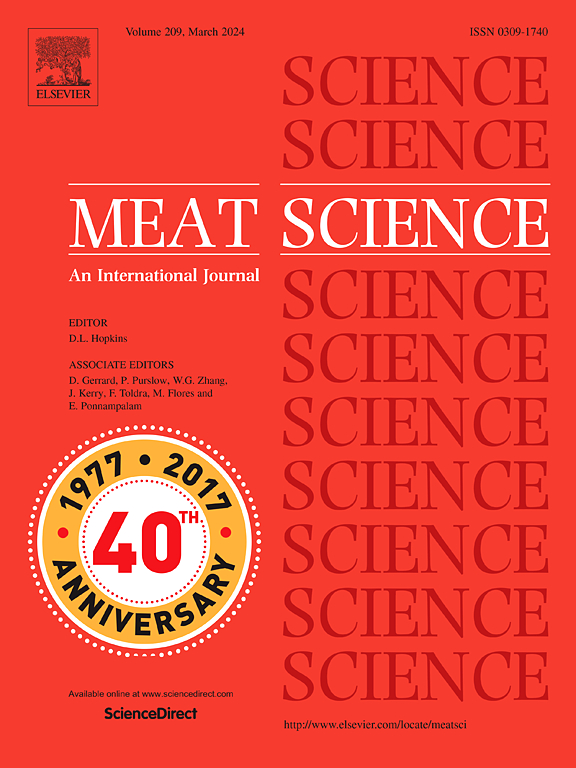Changes in volatile organic compounds of tray-packed fresh beef sausages under refrigeration: The roles of dominant spoilage bacteria
IF 7.1
1区 农林科学
Q1 Agricultural and Biological Sciences
引用次数: 0
Abstract
This study aimed to investigate the change of volatile organic compounds (VOCs) in fresh beef sausages during refrigerated storage and assess the relationship between VOC levels and microbial population. Forty-one VOCs were detected using headspace solid-phase microextraction coupled with gas chromatography-olfactometry-mass spectrometry (GC-O-MS). The results of the 16S rDNA amplicon sequencing indicated that the spoilage bacteria predominated were Brochothrix and Serratia. Acetoin, hexanal and 1-octen-3-ol were significantly positively related to Brochothrix (Mantel's r = 0.95, p = 0.017) and Serratia (Mantel's r = 0.81, p = 0.024) levels. As the key VOCs, these three compounds may serve as spoiling indicators for tray-packed fresh beef sausages. This study elucidates the production of VOCs by microbial roles in fresh beef sausages and offers insights for prolonging the shelf life.
托盘包装新鲜牛肉香肠在冷藏条件下挥发性有机化合物的变化:优势腐败菌的作用
本研究旨在研究新鲜牛肉香肠在冷藏过程中挥发性有机化合物(VOC)的变化,并评估VOC含量与微生物种群的关系。采用顶空固相微萃取-气相色谱-嗅觉-质谱联用技术(GC-O-MS)检测了41种挥发性有机化合物。16S rDNA扩增子测序结果显示,主要腐坏菌为胸菌属和沙雷氏菌属。乙托因、己醛和1-辛烷-3-醇与毛蓟马(Mantel’s r = 0.95, p = 0.017)和沙雷氏菌(Mantel’s r = 0.81, p = 0.024)水平呈显著正相关。作为关键挥发性有机化合物,这三种化合物可以作为托盘包装的新鲜牛肉香肠的变质指标。本研究阐明了微生物在新鲜牛肉香肠中产生挥发性有机化合物的作用,并为延长牛肉香肠的保质期提供了见解。
本文章由计算机程序翻译,如有差异,请以英文原文为准。
求助全文
约1分钟内获得全文
求助全文
来源期刊

Meat Science
工程技术-食品科技
CiteScore
12.60
自引率
9.90%
发文量
282
审稿时长
60 days
期刊介绍:
The aim of Meat Science is to serve as a suitable platform for the dissemination of interdisciplinary and international knowledge on all factors influencing the properties of meat. While the journal primarily focuses on the flesh of mammals, contributions related to poultry will be considered if they enhance the overall understanding of the relationship between muscle nature and meat quality post mortem. Additionally, papers on large birds (e.g., emus, ostriches) as well as wild-captured mammals and crocodiles will be welcomed.
 求助内容:
求助内容: 应助结果提醒方式:
应助结果提醒方式:


